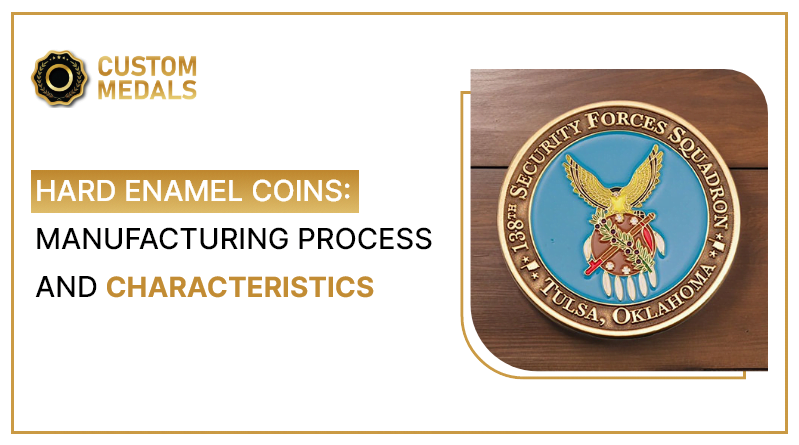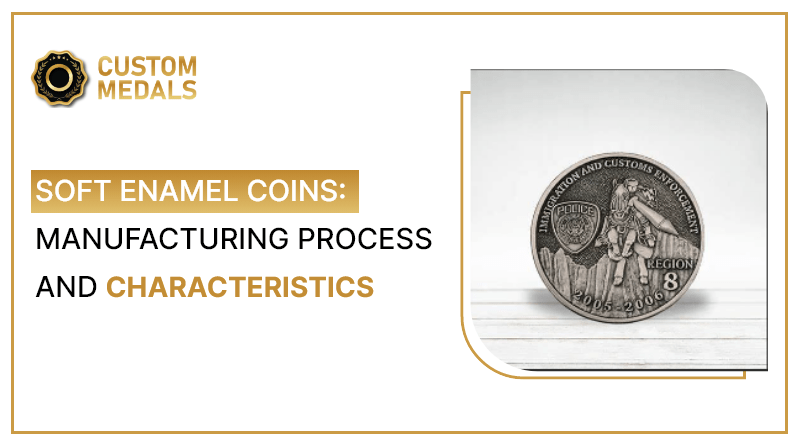- Which one is better?
- Manufacturing and Characteristics of Hard Enamel Coins
- Manufacturing and Characteristics of Soft Enamel Coins
Challenge coins have been a cherished tradition of celebrating achievements and strides. They have been among the relics, kept as archives or preserved as collectibles. Behind their intriguing sculpting follows a rigorous manufacturing process. Usually, they undergo the die-striking method, but at times, they are produced via the enameling process as well. Enameling, a common technique used to manufacture fashion accessories, includes soft enamel and hard enamel coins. While both categories are equally in demand, they differ in terms of manufacturing and durability. Let’s take a comprehensive view of their stark differences.
Soft vs Hard Enamel Coins: Which One is Better?
Custom coins have served as a means of awarding and honoring milestones, particularly for veterans who have served substantial tenures in the Defense sector. However, in the present era, their functionality has expanded beyond being commemorative tokens within the defense or military unit, encompassing other sectors and often serving as fundraising tools or collectibles. Additionally, due to their ability to have intricate designs embossed, they are often used as mascots and collectibles. As both coin finishes have been prominently used in the creation of custom challenge coins, one wonders which one offers a more tactile approach and fundamentally embodies the epitome of elegance and crispness.

Manufacturing Process And Characteristics of Hard Enamel Coins
Custom hard enamel coins have been among the much-heralded tokens. Their texture evidently differs from their soft enamel counterpart. They are considered much more durable than soft enamel etchings. The manufacturing process parallels the traditional minting process, with one exception: the enamel layer, known as cloisonné, is applied and fired several times to fill the recessed areas.
Moreover, the surface design doesn’t end here; enamel is applied to plating to create a wider range of hues and vibrant colors. For instance, silver plating paired with enamel produces a blue or cobalt hue, while gold plating paired with enamel results in a reddish or crimson hue. Often, 3-D custom designs are also embossed. The final stage involves polishing the edges and surface for a smooth, crisp finish.
Hard enamel coins typically offer a stark, simple effect, unlike soft enamel coins, which radiate a more 3-D effect. The production method of hard enamel is relatively more costly, but it results in making them more durable.

Manufacturing Process and Characteristics of Soft Enamel Coins
The soft enamel technique isn’t just limited to creating accessories; soft enamel commemorative coins are equally popular, especially among reputed organizations.
Akin to its hard enamel coin counterpart, this engraving also undergoes a die-striking procedure. However, there are some exceptions, such as the production of enamel and its application. The creation of soft enamel involves filling the recessed areas with enamel and then baking it to harden, typically done once. Unlike hard enamel, soft enamel is not polished to be leveled with the metal, resulting in a textured and vibrant appeal. Usually, an epoxy coating can be applied to soft enamel coins to protect them from potential tarnishing or corrosion.
Due to its relatively less intensive and more cost-effective method, soft enamel souvenir coins are more popular among consumers.
For this reason, it can be said that a soft enamel challenge coin finish is a more sought-after choice for adornments and moldings. If you are intrigued to delve deeper into its production process and how it enhances engravings, check out our blog, which extensively covers all you need to know about soft enamel and whether it is a suitable choice.
FAQS
What is the difference between soft enamel and hard enamel coins?
Hard enamel coins feature crisp, smooth designs, while soft enamel coins feature more raised and vivid designs.
How to make enamel challenge coins?
Creating enamel challenge coins on your own can be tasking, as it involves a rigorous process, including the layering of enamel. Therefore, it is best to approach a medallion or coin manufacturing service in this regard.
Why are hard enamel challenge coins more expensive?
Hard enamel challenge coins are more expensive because of their creation’s complex manufacturing process and durability.
How should enamel challenge coins be cared for?
They should not be exposed to harsh weather or environmental conditions. If necessary, cleaning should be done gently using mild detergent, warm water, and a soft-bristled toothbrush.
In essence, soft and hard enamel coins are often favored due to their ability to radiate visual appeal and signify prestige and grandeur. However, they both vary in many aspects, and therefore these differences are highlighted in this blog, enabling you to make an informed decision when selecting either. If you are interested in learning more about the production process and uses of enamel finish, check out our blogs dedicated solely to these categories, including the hard enamel guide you need to make a selection of it.

